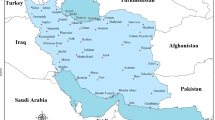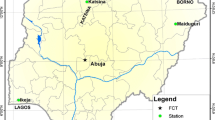Summary
This study examines the characteristics of wet spells in Greece, using daily rainfall gauge data, over a 40-year period (1958–1997). The longest wet spells, computed for two different thresholds (0.1 mm and 1 mm), were observed in Western Greece and Crete, whereas the shortest ones were found in the central and south Aegean. A detailed analysis of the wet spells, dividing them into three classes, shows that on an annual basis their highest frequencies were observed in Western and Northwestern Greece. The seasonal results are also quite similar. The trends and the variability of the mean length of the wet spells were also analyzed. Negative trends were found in the case of the year-to-year analysis and during winter. Finally, this study presents an evaluation of two theoretical distribution models; the second order Markov Chains (MC2) and the Negative Binomial Distribution (NBD), by their adjustment to the empirical data. Both models can be used in the future for an estimation of the wet spells in the area under study.
Similar content being viewed by others
Author information
Authors and Affiliations
Rights and permissions
About this article
Cite this article
Tolika, K., Maheras, P. Spatial and temporal characteristics of wet spells in Greece. Theor. Appl. Climatol. 81, 71–85 (2005). https://doi.org/10.1007/s00704-004-0089-9
Received:
Revised:
Accepted:
Published:
Issue Date:
DOI: https://doi.org/10.1007/s00704-004-0089-9




